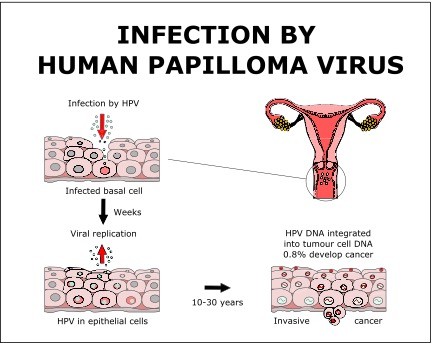New research presented at the American College of Cardiology Scientific Session in Chicago this week has revealed a significant link between human papillomavirus (HPV) and an increased risk of heart disease. The study, which pooled data from seven studies tracking nearly 250,000 volunteers over 17 years, found that HPV-positive individuals had a 40% higher likelihood of developing cardiovascular disease and twice the risk of coronary artery disease compared to HPV-negative patients.
Even after adjusting for factors such as medical history, lifestyle behaviors, and use of blood pressure-lowering drugs, HPV-positive patients still exhibited a 33% higher risk of cardiovascular disease. Researchers suggest that doctors consider closer heart monitoring for HPV-positive individuals, similar to patients with other known cardiovascular risk factors.
“We always talk about cardiovascular risk factors like smoking, high blood pressure, and so on, but we know that about 20% of cardiovascular disease cannot be explained by these conventional risk factors,” said study leader Dr. Stephen Akinfenwa of UConn School of Medicine. “This makes it important to identify non-conventional risk factors like HPV that could potentially be targeted.”
The underlying mechanism remains unclear, but researchers speculate that chronic inflammation may be a contributing factor. The team is also investigating whether reducing HPV via vaccination could lower cardiovascular risk.
New Prostate Surgery Technique Improves Erectile Function Outcomes
A modified prostate cancer surgery technique has been found to significantly improve erectile function preservation compared to standard surgeries, according to UK researchers presenting at the European Association of Urology Congress in Madrid.
The approach, called NeuroSAFE (Neurovascular Structure-Adjacent Frozen-Section Examination), involves pathologists analyzing prostate tissue samples during surgery. If cancer cells are absent, the surgeon can leave the nerve structures intact, increasing the likelihood of preserving erectile function.
A randomized trial involving 344 patients undergoing robot-assisted radical prostatectomy found that one year post-surgery, 39% of men in the NeuroSAFE group had no or mild erectile dysfunction, compared to only 23% in the standard surgery group. Severe erectile dysfunction rates were also lower in the NeuroSAFE group (38%) compared to standard surgery (56%).
Although the technique did not improve full continence rates after 12 months, patients in the NeuroSAFE group recovered urinary control faster than those who underwent standard surgery.
Dr. Ricardo Almeida-Magana of University College London stated, “NeuroSAFE opens up the option of nerve-sparing surgery for many more men, without compromising the chances of controlling the cancer.”
While the study was not designed to assess long-term cancer outcomes, Dr. Derya Tilki of the Martini Klinik Prostate Cancer Center noted that data from over two decades of using the technique suggest it does not negatively impact cancer control.
Childhood Tuberculosis Cases on the Rise in Europe
The number of childhood tuberculosis (TB) cases in the European Union and European Economic Area (EU/EEA) increased by 26% in 2023, according to new data from the European Centre for Disease Control and Prevention (ECDC) and the World Health Organization (WHO) Regional Office for Europe.
This marks the third consecutive year of rising childhood TB cases in the region, which saw nearly 30,000 new TB cases overall in 2023. Children under 15 accounted for 4.3% of these cases. Health experts warn that childhood TB is an indicator of ongoing community transmission since young children are at higher risk of developing the disease shortly after infection.
Alarmingly, one in five children diagnosed with TB in the region had unknown treatment outcomes. Incomplete treatment can lead to drug-resistant TB strains and further spread of the disease. Only about half of patients with multi-drug resistant TB completed their treatment, falling well below the WHO’s target success rate of 90%.
In 2023, treatment success rates stood at 67.9% in EU/EEA countries and 77.2% in the broader WHO European Region. Health officials emphasize the urgent need for improved TB control strategies and treatment completion rates to curb the disease’s spread.




















